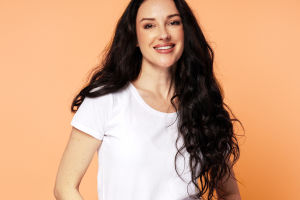Contouring might seem like a skill reserved for professional makeup artists, but the truth is—it's more approachable than you think.
With the right tools, techniques, and a little practice, anyone can learn to contour for a naturally defined and enhanced look.
Whether you're preparing for a special occasion or want to subtly enhance your everyday routine, this guide will walk you through everything you need to know.
What Is Contouring?
Contouring is a makeup technique that uses darker and lighter shades to create shadows and highlights, reshaping and defining certain areas of the face. It helps enhance your features by adding dimension, whether it's making cheekbones appear higher, the jawline more sculpted, or the nose more refined.
Unlike full glam looks, modern contouring emphasizes subtlety. It's less about heavy lines and more about blending naturally with your skin tone.
Understanding Your Face Shape
Before you pick up a contour stick or powder, it's essential to understand your face shape. The placement of contour and highlight can vary depending on whether you have a round, oval, square, heart, or diamond-shaped face.
For example:
• Round faces benefit from contouring along the sides of the forehead and under the cheekbones to add definition.
• Square faces can soften the jawline and emphasize the cheekbones.
• Oval faces usually require minimal contouring, focusing more on enhancing natural angles.
Choosing the Right Products
Contour products come in various forms—powder, cream, stick, or liquid. Here's how to choose based on your needs:
• Powder contour is ideal for oily skin or a matte finish. It's also easier for beginners to control.
• Cream or stick contour blends well and gives a more natural, skin-like finish—perfect for dry or normal skin.
• Liquid formulas are often more lightweight and work well under or over foundation.
When picking a contour shade, go one to two shades darker than your natural skin tone, and choose a cooler or neutral undertone to mimic natural shadows.
Highlighting Basics
Highlighting is the counterpart to contouring. Instead of creating shadows, it brings light and attention to certain areas such as the tops of the cheekbones, bridge of the nose, brow bones, and cupid's bow.
Use a product that is one to two shades lighter than your skin tone. Cream highlighters offer a dewy glow, while powder highlighters provide a more noticeable shimmer.
Essential Tools You'll Need
The right tools can make all the difference in how your contour blends and appears. Here are a few essentials:
• Angled brush: Great for applying powder contour precisely along cheekbones and jawline.
• Beauty sponge: Ideal for blending cream or stick products.
• Fan brush or small fluffy brush: Works well for applying highlighter subtly.
Clean tools are crucial. Regularly washing your brushes and sponges helps prevent product buildup and ensures smoother application.
Step-by-Step Contouring Guide
1. Start with foundation: Apply your usual base to even out your skin tone. This gives the contour a smooth canvas to work on.
2. Apply contour: Use your product to draw or dab under cheekbones, along the hairline, jawline, and sides of the nose.
3. Apply highlighter: Add light to the tops of your cheeks, center of the forehead, chin, and down the nose.
4. Blend well: This is the most important step. Use a damp sponge or brush to gently blend the edges, avoiding any harsh lines.
5. Set your makeup: Lightly dust translucent powder over your contoured areas to lock everything in place.
Tips for a Natural Look
• Use natural light when applying makeup to better see how your contour looks in real life.
• Less is more—start with small amounts of product and build up gradually.
• Match your undertones—cool-toned contour products work best for most skin tones as they mimic real shadows.
Common Mistakes to Avoid
• Using too dark a shade: This can look unnatural and muddy. Always test on your jawline first.
• Not blending enough: Lines should disappear into your foundation, not sit on top of it.
• Applying shimmer contour: Contour should be matte. Reserve shimmer for highlighting only.
Contouring for Different Occasions
You don't need to contour heavily every day. For work or daily outings, a subtle cheek contour may be all you need. For evening events or photography, a more defined sculpted look can enhance features under lighting.
Adjust the intensity of your contouring based on the setting and mood. The versatility of contouring makes it suitable for both soft glam and bold transformations.
Expert Tip: Skin Prep Matters
Dermatologists and professional makeup artists agree—well-prepped skin makes all the difference. According to cosmetic expert Dr. Nina Desai, "Hydrated and primed skin allows makeup to blend better and last longer." Always start with a clean, moisturized base, and consider using a primer to ensure smooth application.
Practice Makes Perfect
The first time you contour, it might feel a bit overwhelming—but don't worry. Like any skill, it improves with practice. Take time to experiment with different techniques, lighting, and products until you find what works best for your unique features.


